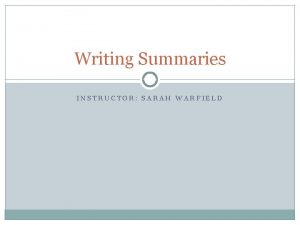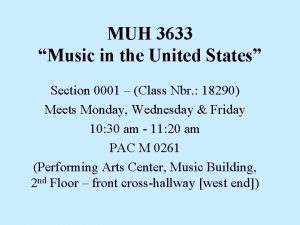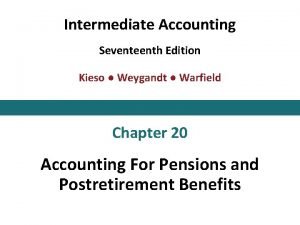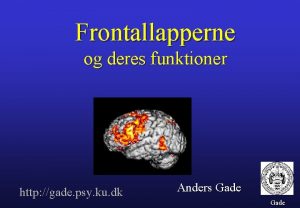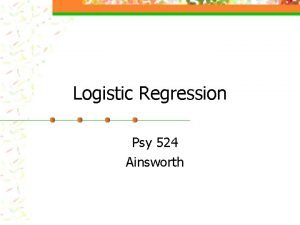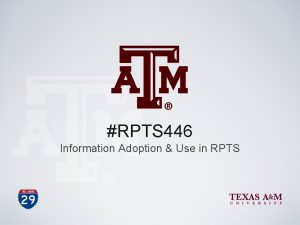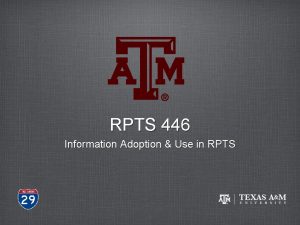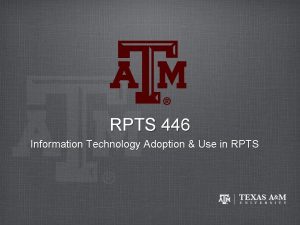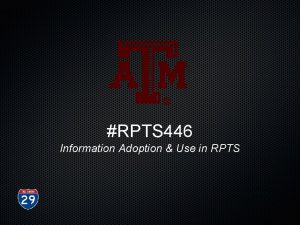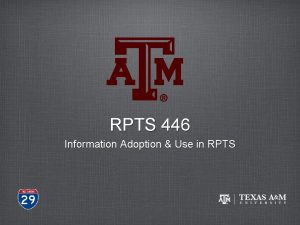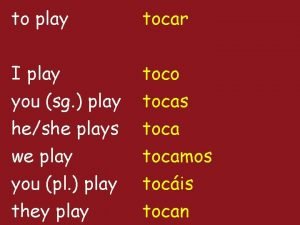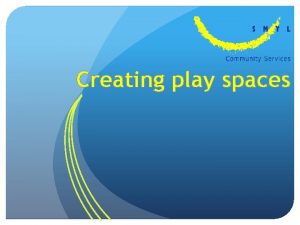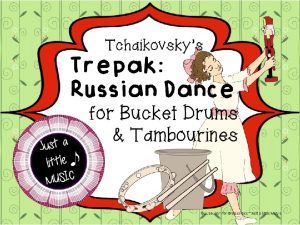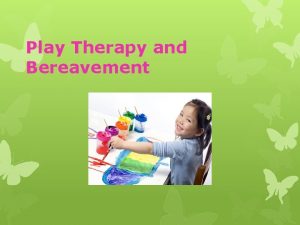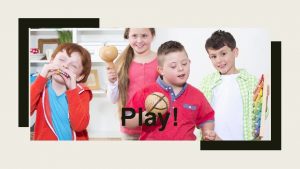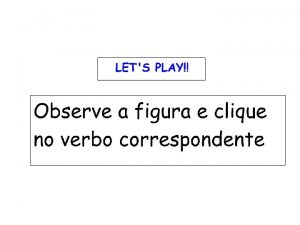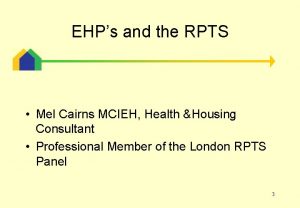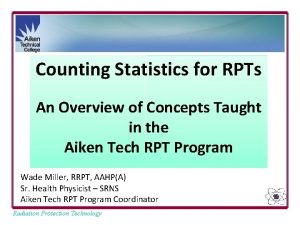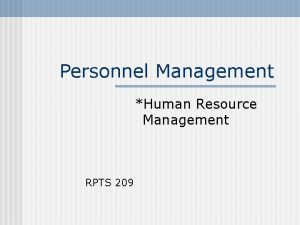PLAY Janeece Warfield Psy D RPTS According to



















- Slides: 19

PLAY Janeece Warfield, Psy. D. , RPT-S

According to Bergen (1998) Play is…. 1. Natural and important to growing up. 2. Something people do all their lives. 3. Something fun, where new things are learned, experiences shared, and there is make believe and learning.

According to Bergen (1998). Play …. 1. Provides an opportunity for the person to take charge and make their own decisions and rules. 2. Provides an opportunity to understand an experience. 3. Is a need which also facilitates emotional control.

According to Bergen (1998) PLAY IS NOT… • A waste of time • A babyish activity • Something done only with toys • Something to do when there’s nothing important to do PLAY IS…. • A basic skill that helps children’s knowledge grow • A natural part of everyone’s life • A chance to make believe

Play • Serves as a medium for children’s expression of emotions.

Play • Builds trust and mastery • Fosters learning and acceptable behaviors • Regulates emotions • Reduces stress • Encourages open and voluntary communication • Promotes creative problem-solving • Elevates spirit -The Association of Play Therapy

Play Therapy • Is an approach to counseling young children in which therapist uses toys, art supplies, games and other play media to communicate with clients using the language of children.

Definition of Play Therapy “The systematic use of a theoretical model to establish an interpersonal process wherein trained play therapists use therapeutic powers of play to help clients prevent or resolve psychosocial difficulties and achieve optimal growth and development. “ (Association of Play Therapy, 2008)

So What Can Play Therapy Achieve? -Establish rapport with children -Help therapist to understand children and their interactions and relationships -Help children reveal feelings they have not been able to verbalize -Help children constructively act out feelings -Provide an environment to test limits, and gain insight about their behavior

Curative Factors of Play Therapy • • Relationship building/attachment Catharsis/Self-expression Trauma processing Skill building (direct learning, modeling, and reinforcement of healthy behaviors) • Helps develop problem-solving skills • Identity development (safe place to develop) • Positive activities (especially helpful for depression) (Schaefer & Drewes, 2009)

Who is Play Therapy For? • • Infants Children Adolescents Adults Couples Families Elderly

Effectiveness of Play Therapy Interventions Play therapy interventions have demonstrated effectiveness in treating and/or addressing: • • • Anger Management (Mc. Guire, 2001; Ogawa, 2004). Grief and Loss (Le. Vieux, 1994; Webb, 2003). Divorce and Family Dissolution (Pedro-Carroll & Reddy, 2005). Crisis and Trauma (Ogawa, 2004; Tyndall-Lind, 2001). ODD and CD Depression Anxiety ADHD PDD/ASD Emotional competence (feelings identification, expression, and regulation) (Bratton, Ray, Rhine, & Jones, 2005)

Types of Play Therapy Materials • Dolls, puppets, plastic figurines • Sensory-Based items • Table games • Blocks, puzzles • Paints, Play-Doh • Pretend play materials

Play Therapy Materials • Purposefully selected • Should include both structured and unstructured materials. • Should include items that facilitate the child and parent to reconstruct reality from their perspective.

A Few Types of Play Therapy • Non-Directive/Client. Centered • Directive

Child-Centered Play Therapy • Immediate and present experience with the child • The therapeutic process is lead by the child • Through a shared relationship therapist conveys acceptance of the child which frees them to develop confidence and selfawareness

Child-Centered Approach • The child selects theme, content, and process of play. • The focus is on the child and not the problem • Goal is to generate the process of change and growth in the child.

Directive Play Therapy • The clinician provides structure and guidance to the session using play-based approaches.

Play Therapy • For more information on play therapy visit the Association of Play Therapy website: www. a 4 pt. org References: Association of Play Therapy (2008) Association of play therapy. Clovis, CA. Schaefer, C. , & Drewes, A. (2009). Therapeutic powers of play. New York, NY: John Wiley and Sons. Bratton, S. , Ray, D. , Rhine, T. , & L. Jones ( 2005). The efficacy of play therapy with children: A meta-analytic review of treatment outcomes. 36, 376 -390. Bergen, D. B. (1998). Play as a medium for learning and development: A handbook of theory and practice. Olney , MD: Association for Child and Education International.
